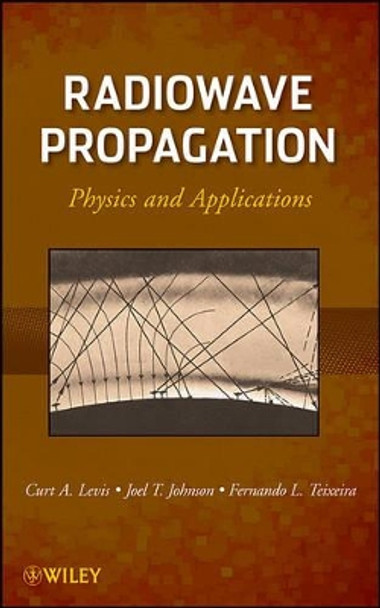Description
Propagation-the process whereby a signal is conveyed between transmitter and receiver-has a profound influence on communication systems design. Radiowave Propagation provides an overview of the physical mechanisms that govern electromagnetic wave propagation in the Earth's troposphere and ionosphere. Developed in conjunction with a graduate-level wave propagation course at The Ohio State University, this text offers a balance of physical and empirical models to provide basic physical insight as well as practical methods for system design.
Beginning with discussions of propagation media properties, plane waves, and antenna and system concepts, successive chapters consider the most important wave propagation mechanisms for frequencies ranging from LF up to the millimeter wave range, including:
-
Direct line-of-sight propagation through the atmosphere
-
Rain attenuation
-
The basic theory of reflection and refraction at material interfaces and in the Earth's atmosphere
-
Reflection, refraction, and diffraction analysis in microwave link design for a specified terrain profile
-
Empirical path loss models for point-to-point ground links
-
Statistical fading models
-
Standard techniques for prediction of ground wave propagation
-
Ionospheric propagation, with emphasis on the skywave mechanism at MF and HF and on ionospheric perturbations for Earth-space links at VHF and higher frequencies
-
A survey of other propagation mechanisms, including tropospheric scatter, meteor scatter, and propagation effects on GPS systems
Radiowave Propagation incorporates fundamental materials to help senior undergraduate and graduate engineering students review and strengthen electromagnetic physics skills as well as the most current empirical methods recommended by the International Telecommunication Union. This book can also serve as a valuable teaching and reference text for engineers working with wireless communication, radar, or remote sensing systems.
About the Author
Curt A. Levis was director of The Ohio State University ElectroScience Laboratory from 1961 to 1969. He received the Eta Kappa Nu Distinguished Teaching Award in 1978, 1979, and 1980; he also received a Distinguished Teaching Award from The Ohio State University Alumni Association in 1980. Professor Levis is an IEEE Fellow.
Joel T. Johnson is a professor in the Department of Electrical and Computer Engineering and ElectroScience Laboratory at The Ohio State University. His research interests are in the areas of electromagnetics, propagation, and microwave remote sensing. He is an IEEE Fellow and a recipient of the ONR Young Investigator, PECASE, and NSF CAREER awards.
Fernando L. Teixeira is an associate professor in the Department of Electrical and Computer Engineering and ElectroScience Laboratory at The Ohio State University, as well as Associate Editor for IEEE Antennas and Wireless Propagation Letters. He is a recipient of the NSF CAREER Award and the triennial USNC-URSI Booker Fellowship.
Reviews
"It is highly recommended for any RF engineer who is concerned with the effects of the propagation channel on his or her system's performance." (International Union of Radio Science, 1 March 2012)
Book Information
ISBN 9780470542958
Author Curt Levis
Format Hardback
Page Count 320
Imprint John Wiley & Sons Inc
Publisher John Wiley & Sons Inc
Weight(grams) 590g
Dimensions(mm) 246mm * 163mm * 23mm






